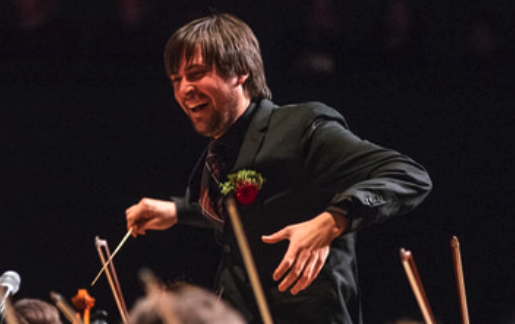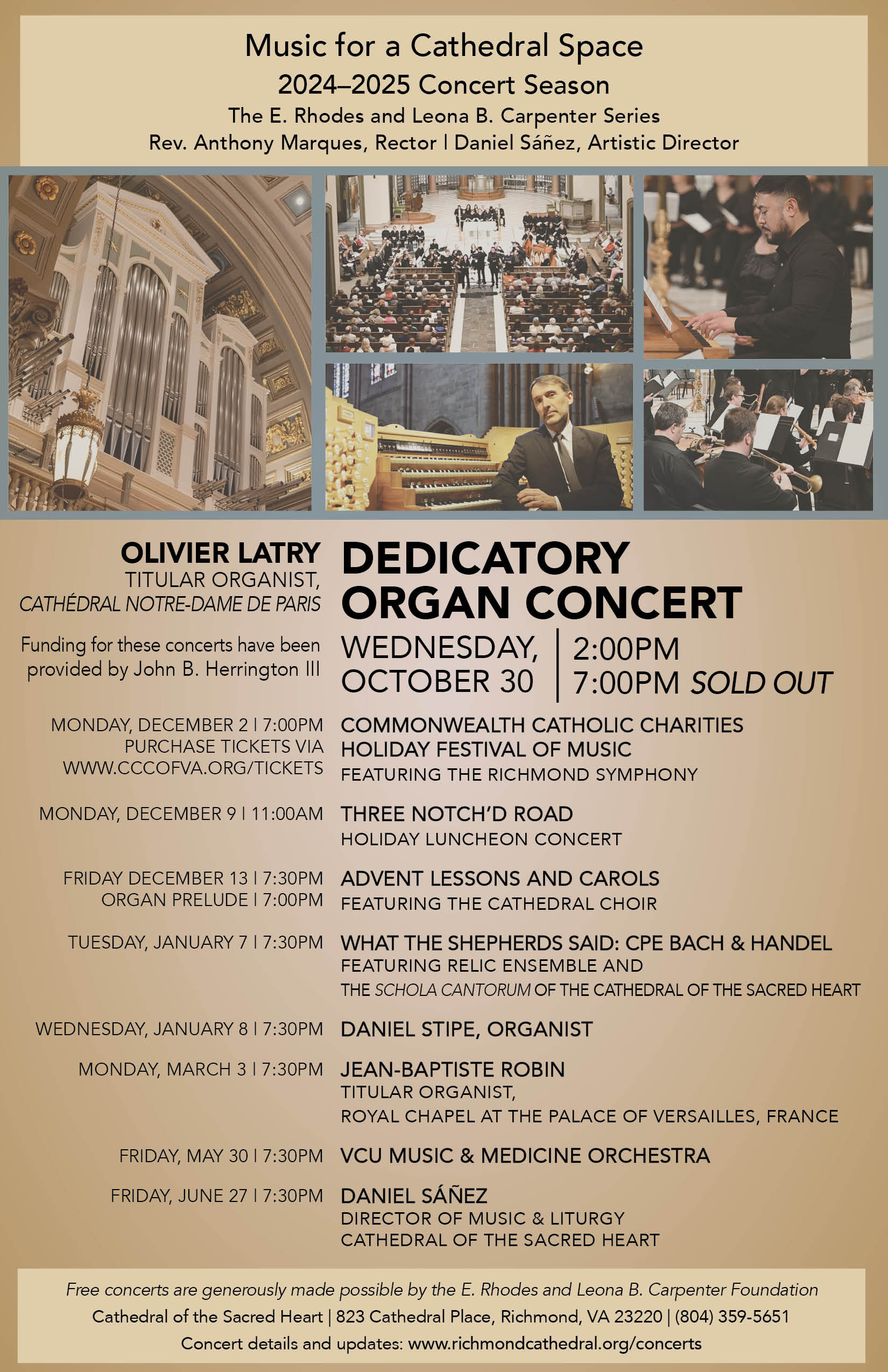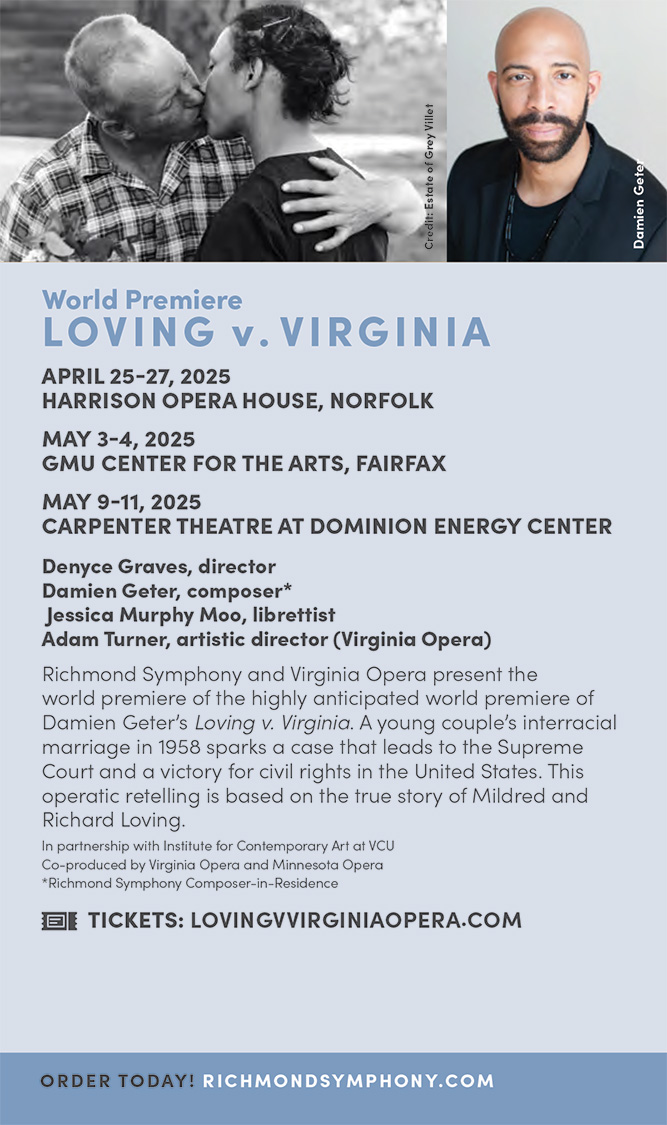
Symphonie Fantastique
Michael Repper | Conductor
Richmond Symphony Chorus
Richard W. Robbins | CHORUS DIRECTOR
RICHMOND SYMPHONY CHORUS

Gabriela Ortiz (b. 1964) | Antrópolis | |
Borodin (1833 - 1887) | Polovtsian Dances from Prince Igor | |
INTERMISSION | ||
Berlioz (1803 - 1869) | Symphonie fantastique, Op. 14 | |
Gabriela Ortiz: Antrópolis
Born in Mexico City in 1964, Gabriela Ortiz hails from a prominent musical family. Her parents were founding members of the influential group Los Folkloristas, established in 1966, which played a pivotal role in reshaping perceptions of Latin American folk music.
The conductor and fellow Mexican Carlos Miguel Prieto commissioned a short work from Ortiz in 2017 to mark the 80th birthday of American icon Philip Glass. Ortiz writes: “The word antro has its origin in the Latin ‘antrum,’ meaning ‘grotto’ or ‘cavern.’ In Mexico, until the 1990s, the term referred to bars or entertainment places of dubious reputation. But nowadays, and especially among younger people, this word refers to any bar or nightclub.
One time, while talking with flutist Alejandro Escuer, we imagined the title of a future work, one that would synthesize the music of Mexico’s legendary dance halls and bars: Antrópolis, a neologism, a precise invented name for a piece that narrates the sound of the city through its dance halls and nightclubs.
Antrópolis …pays a very personal tribute to some of those ‘antros’ or emblematic dance halls of Mexico City that left a special sonorous imprint in my memory…. It is the sonorous reflection of a city through its ‘antros,’ including the accumulation of experiences that we bring, and that form an essential part of our history in this very complex but fascinating Mexico City.”
Borodin: Polovtsian Dances from Prince Igor
The Georgian-Russian composer Alexander Borodin belonged to a circle of pioneering composers who flourished in St. Petersburg in the 1860s and advocated an authentic Russian art music.
Borodin wrote his own libretto for his opera Prince Igor after a medieval Slavic epic depicting the conflict between Russians and the nomadic Polovtsian warriors from the Central Asian steppes. Set in 1185, Prince Igor recounts the fate of the title hero, who leads a military expedition against Khan Konchak and his nomad Polovtsi (a tribe of Tatars). He fails and is captured but escapes to rejoin his people and rouses them to eventual victory. The opera was premiered posthumously in 1890.
The Polovtsian Dances occur during a scene after the Russians have been taken prisoner and represent the music of the enemy. The Khan admires Igor’s courage and treats him with hospitality. He orders those he has enslaved to entertain the Prince with a series of dances. Borodin’s aromatic melodies and driving rhythms project a 19th-century-tinged vision of Russia’s distant past. The Dances begin with dreamy music that introduces the most-famous tune from the opera: a nostalgic melody that provided the basis for the love song “Stranger in Paradise” from the 1953 musical Kismet.
Another dance is associated with the “wild men” and features animated piping from the woodwinds against a folk-like drone. Following this are a cymbal-punctuated dance for the assembled groups glorifying the Khan and another dance that races at breakneck speed. Earlier themes are reprised and recombined, culminating in a swirling, frenzied finale.
Berlioz: Symphonie fantastique
In the fall of 1827, a London theater company caught the attention of the young Berlioz with its touring performances of plays by Shakespeare. A significant part of his fascination was connected with the Irish actress Harriet Smithson, who played Ophelia and Juliet.
A little later, Berlioz experienced a similar epiphany when the symphonies of Beethoven were introduced to Paris. He discovered a model for the Symphonie’s five-movement design in Beethoven’s Pastoral Symphony.
All of these threads merge in the Symphonie fantastique, which premiered in December 1830. In Berlioz’s original concept, the work centers around an unnamed Artist’s obsession with a woman who represents his ideal of love. The composer published an elaborate program detailing a narrative about the Artist’s conflicting emotions as he is haunted by his image of the Beloved.
As anxiety that she has betrayed him gnaws at the Artist, he plans to commit suicide by taking a large dose of opium but instead succumbs to hallucinations that he has murdered the Beloved and is witnessing his own execution. The final movement continues this nightmare with an expedition into hell, where the Artist participates in a witches’ sabbath celebrating his funeral. Even the Beloved takes part in their revels.
Composed by the 26-year-old Berlioz, the Symphonie fantastique revolutionized orchestral music with its vividly dramatic storytelling. It traces a journey from the longing and passion of the first movement to a scene at a ball, a lonely trip to the countryside, and a chilling “March to the Scaffold” before arriving at the macabre finale, in which Berlioz uses an array of special sonic effects. The Symphonie fantastique signaled a revolutionary new approach to music as a medium for autobiographical expression.
(c)2025 Thomas May
















